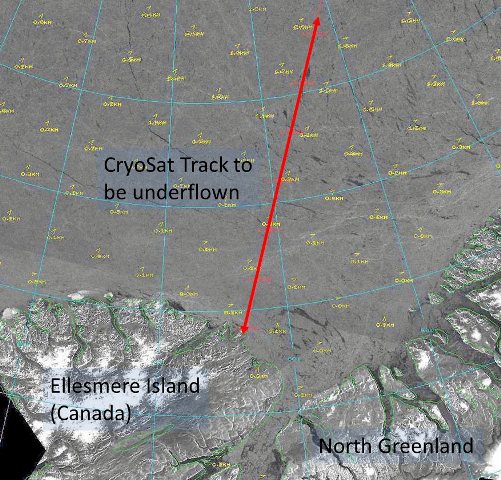From Malcolm (ESA), the Arctic, 29 March
Today, the weather is crisp and clear with blue sky stretching out across the frozen expanse of the Arctic Ocean as far as the eye can see. While the cold air definitely has a sting to it (it’s below –30 °C after all), the complete lack of wind makes it tolerable. In short, today is ideal weather for the ESA and NASA aircraft to join forces and fly together to take measurements along the same ground track as CryoSat did this morning.
As I write this blog, both the NASA P-3 and ESA Twin Otter have taken off and are flying around 300–600 metres above the sea ice collecting valuable measurements on ice conditions – the very same sea ice that CryoSat viewed this morning from 700 km above.
Later today, we should have the first feedback from this unique experiment which I’m hoping we can report on tomorrow.
While I wait for the planes to return safely and report on their findings, I would like to briefly highlight the critical role of other participants in this campaign. The image below was produced yesterday by Roberto Saldo from the National Space Institute at the Technical University of Denmark. It shows a valuable piece of the puzzle in understanding Arctic sea-ice.
It shows the tip of Ellesmere Island and northeastern Greenland as seen by the ASAR instrument on ESA’s Envisat satellite. The red line indicates the flight route for ESA and NASA today. The dark streaks in the image indicate areas of open water called ‘leads’. Knowing their location is useful as they represent areas where there is effectively zero ice thickness.
Even more important are the small yellow markings, which show how quickly and the direction the ice is moving. Reassuringly, there is very little ice movement today which means that both the planes and CryoSat will be looking at the very same ice. The results from these vastly different sources of information can then be compared.
Without Roberto and his team and satellites carrying radar such as Envisat we would have no way of knowing.









Discussion: no comments